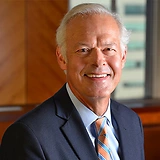Whether you’re Joe Burrow or a Sunday morning pickle ball aficionado, you gotta have it, right? Footwork.
Footwork is fundamental. Especially which foot you lead with. That first foot plant sets it all in motion: the foundation, the balance, the shot, the throw, swing, coordination and power. Big O, Cincinnati’s basketball icon Oscar Robertson, observed that footwork was first and foremost about positioning: “You’ve got to learn the footwork, the positioning…”
So you’re wondering what this has to do with the Supreme Court and the Constitution? Sorry, but for some of us visual learners, a picture is worth a thousand abstract legalisms. So just for fun imagine that each one of the 9 Justices is suited up on the “Court” wearing a pair of high top basketball shoes. The topic is the First Amendment, or specifically the Religion Clauses: the Free Exercise Clause and the Establishment Clause. Imagine each Justice has Free Exercise Clause written with a Sharpie marker on the toe of the right shoe and Establishment Clause on the toe of the left shoe. Here’s the question: What foot do they lead with? The point: In applying the First Amendment to religion cases, each Justice has his or her own legal positioning, which depends on which of the two parts of religious freedom they tend to lead with: Free Exercise or Establishment.
Generally speaking, if you lead with Free Exercise, you lean first in the direction of protecting from government interference the rights of individuals and groups to follow their conscience and freely exercise religious beliefs. If you lead with Establishment Clause, you lean first in the direction of protecting separation of church and state from governmental actions that tend to ‘establish’ this or that religion. As with all footwork, you need both feet. So both the Free Exercise and Establishment Clauses have to work together. But it makes a difference which is your go-to-first.
If we were to draw a dotted line map of all the different footwork Supreme Court Justices has tried out over the past say fifty years of religion cases, the footprints would go all over the court (and sometimes out of bounds). Even the Justices themselves have admitted that the Court has historically lacked a clear and consistent set of legal tests and principles in religion cases.
These roundabout judicial footprints come at a time in a country of 331 million souls when religious belief and non-belief is highly pluralistic, often intertwined with other cultural controversies, sometimes healing sometimes deepening divisions. What will be the guideposts for religious accommodation? To what extent will religious exemptions from laws of general applicability be recognized? Especially since religious faith is for many people connective to human dignity, the Court’s legal principles will need enough flexibility, enough factual and contextual awareness in each case, to work with the fact of religious pluralism.
The topic of religious freedom in contemporary legal circles involves lots of curiosity about where Scotus’ legal positioning will lead. How will the addition of Justices Barrett, Gorsuch and Kavanaugh (in lieu of Justices Ginsburg, Kennedy and Scalia) change the Court’s footwork in religion cases? On the Free Exercise Clause, Justices Gorsuch, Alito and Thomas seem to lead most with that foot. Maybe Justice Barrett will too, but she is just beginning her first full and in-person term on the Court so her jurisprudence track record is thin for now. Justice Kavanaugh leans in that direction as well. With a majority of 5 and maybe 6, we could be at the beginning of a new and potentially long era of Scotus positioning as the Free Exercise Court, solicitous about whether governmental action discriminates against, coerces or interferes with free exercise of religion and less interested in drawing a hard, bright line of church-state separation.
One thing for sure is that the religious freedom cases and controversies will keep coming to a Court that seems inclined to jump in.
Feet first.

